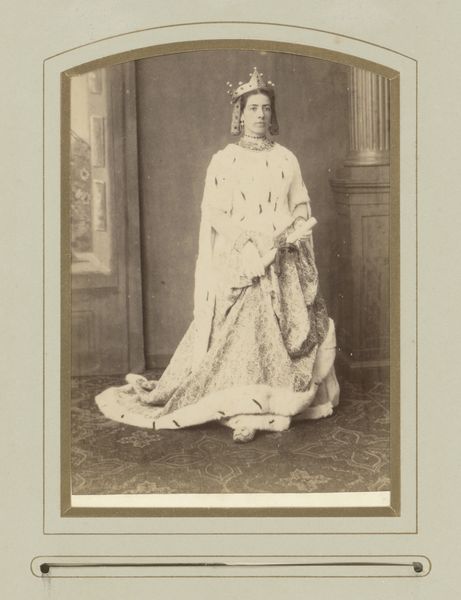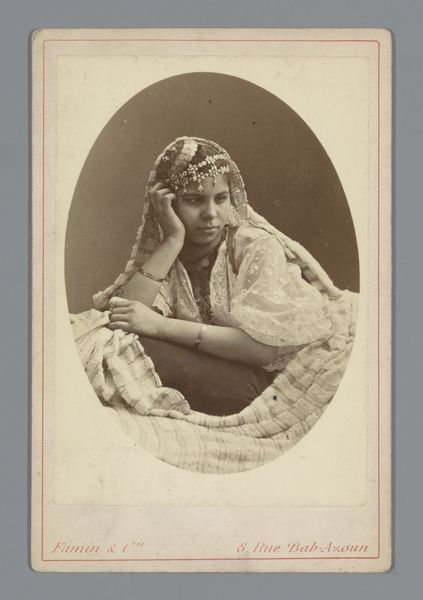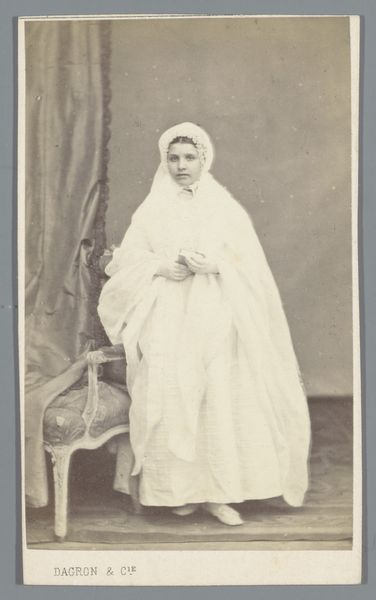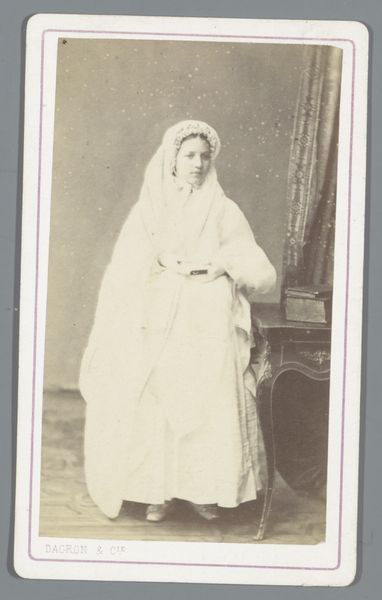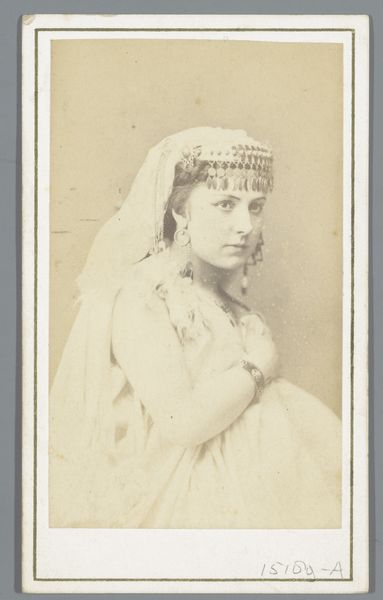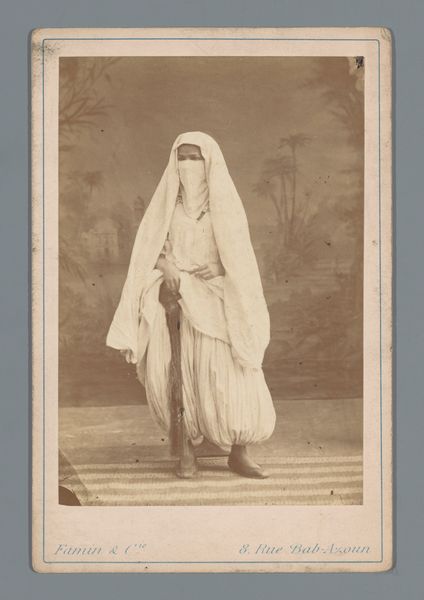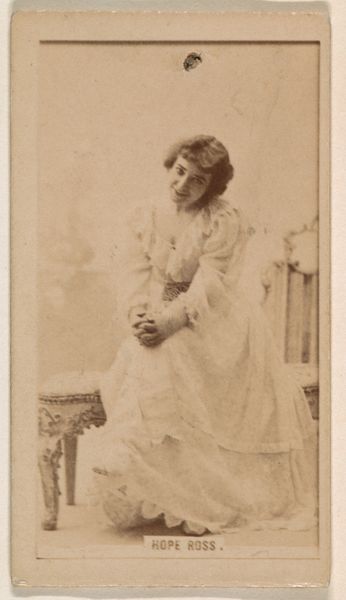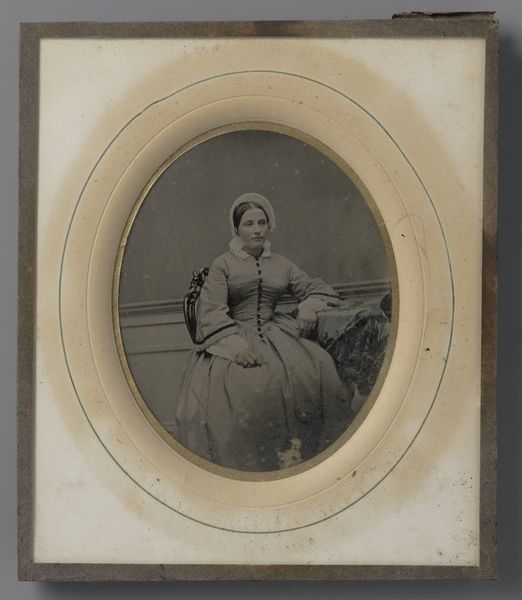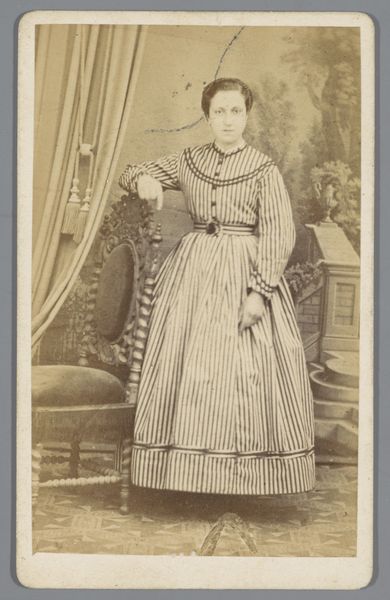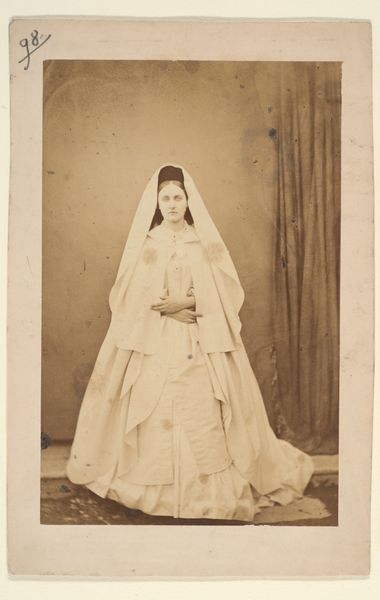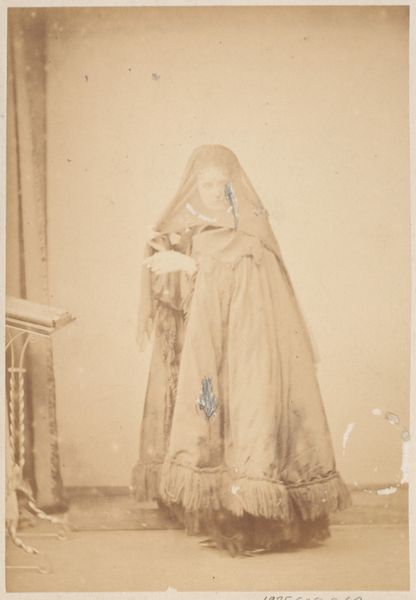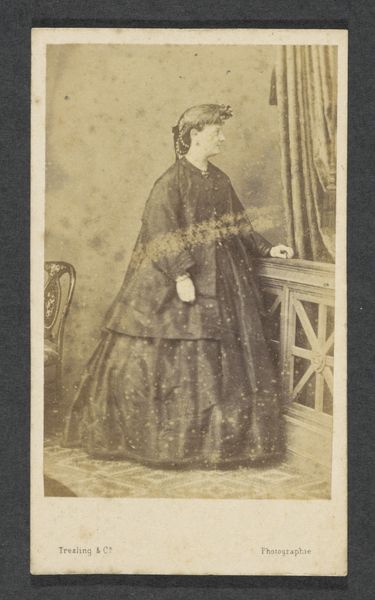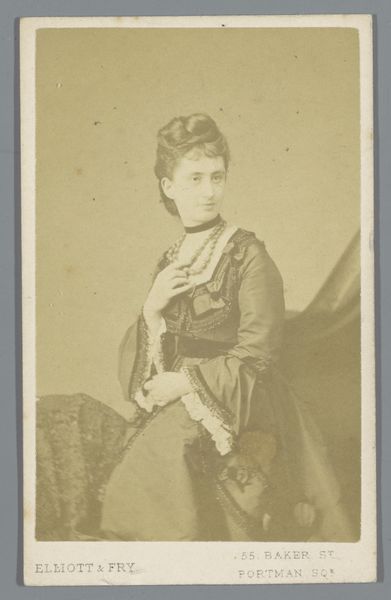
photography
#
portrait
#
photography
#
framed image
#
orientalism
#
costume
Dimensions: height 164 mm, width 108 mm
Copyright: Rijks Museum: Open Domain
This photograph, titled ‘Jonge Moorse vrouw’ and created by Famin et Cie., offers a window into the world and studio practice of late 19th-century photography. The sepia tone is intrinsic to this albumen print. The process involves coating paper with egg white and silver nitrate, creating a surface receptive to light and capable of capturing fine detail. The light, composition and tonal range all contribute to the image's soft, warm aesthetic. But the making of it is often overlooked. These photographs were more than mere likenesses; they were commodities, produced in multiples and sold as souvenirs or ethnographic documents. The studio, like a factory, would have employed various hands, each contributing to the final product. Looking at this photograph, we might think of the labor involved, not only of the photographer but also of the assistants who prepared the materials, posed the subject, and printed the images. By considering the materiality and production of this photograph, we gain a deeper understanding of its cultural and economic context, moving beyond the surface to appreciate the complex interplay of art, craft, and industry.
Comments
No comments
Be the first to comment and join the conversation on the ultimate creative platform.
